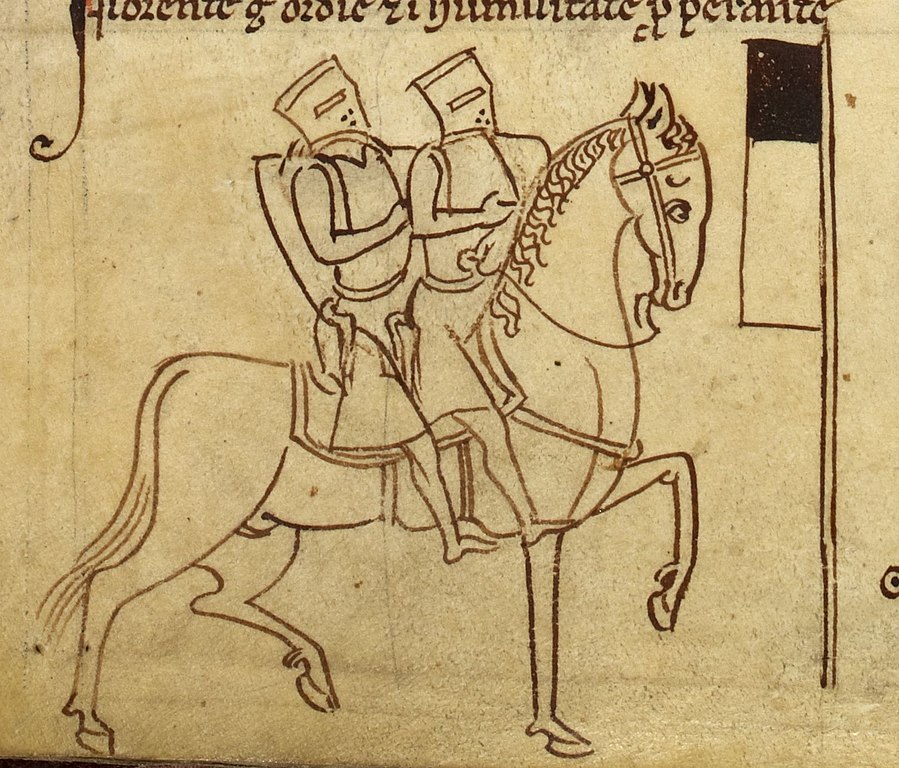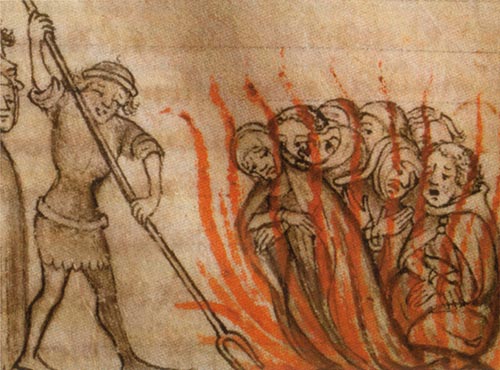Knights Templar
The Poor Fellow-Soldiers of Christ and of the Temple of Solomon (Latin: Pauperes commilitones Christi Templique Salomonici), also known as the Order of Solomon's Temple, the Knights Templar, or simply the Templars, was a Catholic military order, one of the most wealthy and popular of the Western Christian military orders. They were founded in 1119, headquartered on the Temple Mount in Jerusalem, and existed for nearly two centuries during the Middle Ages.
Templar knights, in their distinctive white mantles with a red cross, were amongst the most skilled fighting units of the Crusades. They were prominent in Christian finance; non-combatant members of the order, who made up as much as 90% of their members, managed a large economic infrastructure throughout Christendom. They developed innovative financial techniques that were an early form of banking, building a network of nearly 1,000 commanderies and fortifications across Europe and the Holy Land, and arguably forming the world's first multinational corporation.
Creation of the order
In 1119, the French knight Hugues de Payens approached King Baldwin II of Jerusalem and Warmund, Patriarch of Jerusalem, and proposed creating a Catholic monastic religious order for the protection of these pilgrims. King Baldwin and Patriarch Warmund agreed to the request, probably at the Council of Nablus in January 1120, and the king granted the Templars a headquarters in a wing of the royal palace on the Temple Mount in the captured Al-Aqsa Mosque.
The Temple Mount had a mystique because it was above what was believed to be the ruins of the Temple of King Solomon. The Crusaders therefore referred to the Al-Aqsa Mosque as "Solomon's Temple," and from this location the new order took the name of Poor Knights of Christ and the Temple of Solomon, or "Templar" knights. The order, with about nine knights including Godfrey de Saint-Omer and André de Montbard, had few financial resources and relied on donations to survive. Their emblem was of two knights riding on a single horse, emphasizing the order's poverty.
Rise of the order
Although the primary mission of the order was militaristic, relatively few members were combatants. The others acted in support positions to assist the knights and to manage the financial infrastructure. The Templar Order, though its members were sworn to individual poverty, was given control of wealth beyond direct donations. A nobleman who was interested in participating in the Crusades might place all his assets under Templar management while he was away.
Accumulating wealth in this manner throughout Christendom and the Outremer, the order in 1150 began generating letters of credit for pilgrims journeying to the Holy Land: pilgrims deposited their valuables with a local Templar preceptory before embarking, received a document indicating the value of their deposit, then used that document upon arrival in the Holy Land to retrieve their funds in an amount of treasure of equal value. This innovative arrangement was an early form of banking and may have been the first formal system to support the use of cheques; it improved the safety of pilgrims by making them less attractive targets for thieves, and also contributed to the Templar coffers.
Arrest and dissolution
The Templars were closely tied to the Crusades; when the Holy Land was lost, support for the order faded. Rumors about occult practices in the Templars' secret initiation ceremony created distrust, and King Philip IV of France, while being deeply in debt to the order, used this distrust to take advantage of the situation.
The Templars were accused of homosexual practices, idolatry, and were suspected of worshiping either a figure known as Baphomet or a mummified severed head they recovered at their original headquarters on the Temple Mount that many scholars theorize might have been that of John the Baptist, among other things.
In 1307, King Philip ordered all the Knights Templar in France to be arrested on Friday, October 13th. They were tortured into giving false confessions and then burned at the stake. Under further pressure, Pope Clement V disbanded the order in 1312.
Aftermath and modern legacy
In 1308, the former members of the Templars were secretly absolved of heresy by the Catholic Church. Following the suppression of the Order, a number of the surviving Knights Templar joined the newly established Order of Christ, which effectively reabsorbed the Knights Templar and its properties in AD 1319, especially in Portugal.
The story of the persecution and sudden dissolution of the secretive yet powerful medieval Templars has drawn many other groups to use alleged connections with them as a way of enhancing their own image and mystery. Apart from the Order of Christ, there is no clear historical connection between the Knights Templar and any other modern organization, the earliest of which emerged publicly in the 18th century.

